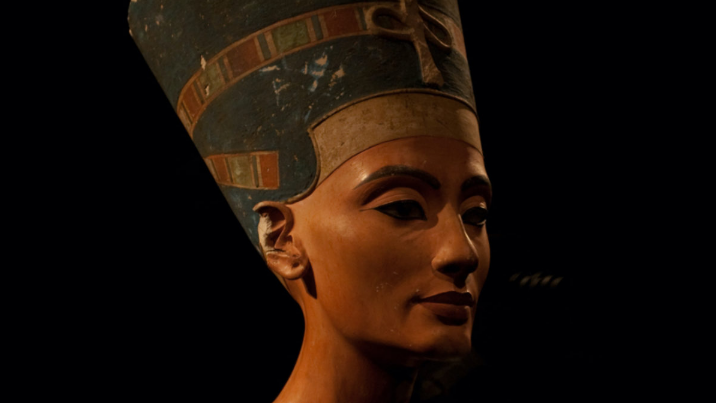Queen Nefertiti
- Alaya Laubsch
- Jan 10, 2022
- 3 min read

Neferneferuaten Nefertiti was the queen of the 18th Dynasty of Ancient Egypt, where she ruled alongside her husband, Pharaoh Akhenaten, during the mid-1300 B.C. Her name means "beautiful are the beauties of Aten, a beautiful woman has come," and she was one of the most powerful and mysterious queens in Ancient Egypt.
Although little is known about Nefertiti's origins, her legacy of power continues to fascinate researchers today. Nefretiti played a significant role in the culture of Egypt, where she and her husband established the Aten cult. This religious mythology was designated to the sun god Aten, where the people of Egypt were to worship him as the most powerful and the one and only worthy god in Egypt's polytheistic canon. Queen Nefretiti and Pharaoh Akhenaten established the city Akhetaton to honor Aten, where a royal palace and numerous open-air temples were constructed. These monumental structures embraced different cultures, where the Aten cult provided significant titles and advantages to royal women in particular, as they were seen to be connected to Nefretiti, Akhenaten and the Aten in a divine triad. The divide triad embodied three divine figures from one of Egypt’s creation myths: the birthing of the twins Shu and Tefnut from the androgynous creator god Atum. The Aten cult was authorized by the Royal women, who represented goddesses in subjects related to female divine power.
Information on Nefertiti's origin lacks evidence, although current research indicates that the queen came from the town Akhmim, and was the daughter or niece of a high official named Ay. A few other speculations suggest that she could have been born in a foreign country, such as Syria. Although the date of Nefertiti and Akhenaten’s marriage remains unknown, it is estimated that the queen was 15 at the time. Upon further analyzation on the relationship between the royal couple, it is believed that they had a genuine romantic bond, which is rare among descriptions of ancient pharaohs.
Queen Nefretiti and her husband had six daughters, two of whom would become future queens of Egypt. One of their daughters, Ankhesenamun, would later marry her half-brother Tutankhamun, Egypt’s future monarch. Despite her short time on the throne, Nefertiti ruled with great power, where her husband made a concerted effort to portray her as an equal. Researchers analyzing several reliefs found that she was often shown bearing a pharaoh’s crown or fighting enemies in battle.
Despite her immense influence and might, Queen Nefertiti vanished from all representations after 12 years under the spotlight. Her whereabouts and lifestyle after the disappearance remains unknown. According to some academics, she died, or was banished when worship of the divinity Amen-Ra regained popularity. Others claim that she was exalted to the position of co-regent, equal in authority to the pharaoh, where she changed her approach and began dressing as a man. It is also a possibility that she became Pharaoh Smenkhkare and ruled Egypt following her husband's death.
In August 2015, a significant find that may resolve the enigma surrounding Nefertiti was revealed. While reviewing scans of Tutankhamun's tomb, the British archaeologist Nicholas Reeves spotted certain wall marks that indicated a possible concealed passage. Along with other structural irregularities, this finding could imply the presence of another chamber, which Reeves hypothesizes might be Nefertiti's long-missing tomb. If this is accurate, it would be the most remarkable archaeological find since Howard Carter's 1922 discovery of Tutankhamun.
Sources:
By: Alaya Laubsch






Comments